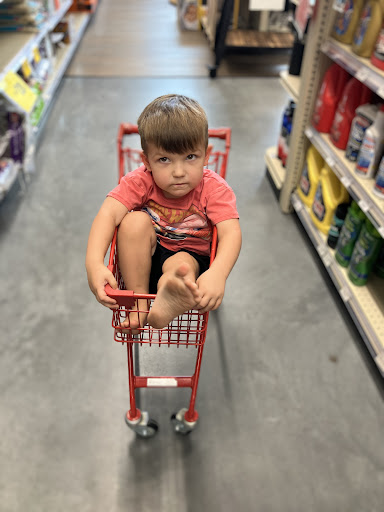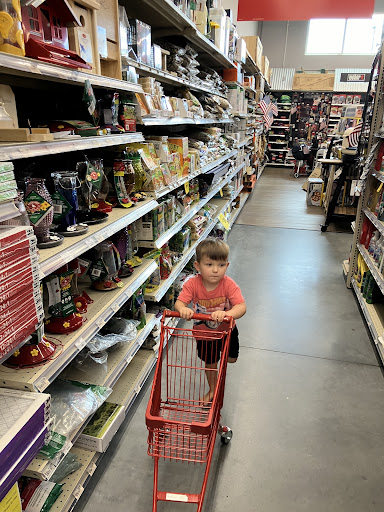Introduction
Bird feeding offers many benefits, both for birds and for us humans. It’s an easy way to enjoy nature and helps our feathered friends survive during tough times.
Here are the main benefits of bird feeding:
- Helps birds find food: Especially in the winter when natural food is scarce.
- Supports bird health: Provides essential nutrients.
- Brings nature closer: Allows us to see birds up close, right in our backyards.
- Promotes conservation: Creates awareness and appreciation for wildlife.
Bird feeding also comes with some ethical concerns. It’s important to feed birds responsibly. This means knowing the risks and following best practices to keep our feathered friends safe.
I’m the helpful team at Lowcountry Ace, and we have a wealth of knowledge on bird feeding and how to do it right. Our guide will walk you through everything you need to start feeding birds responsibly and reap the rewards of this enjoyable hobby.
Choosing the Right Feed
Choosing the right feed is crucial for attracting a variety of birds and keeping them healthy. Different birds have different preferences, and the type of feed you offer can make a big difference in who visits your feeder.
Best Feed for a Variety of Birds
Sunflower Seeds
Sunflower seeds are a favorite among many bird species. Black-oil sunflower seeds are especially popular because they are high in fat and easy for small birds to crack open. They attract cardinals, tufted titmice, finches, and many others.
Suet
Suet is a great option for insect-eating birds like woodpeckers, wrens, and chickadees. It’s especially useful during cooler months when insects are scarce. Avoid offering suet in hot weather as it can become rancid.
Peanuts
Peanuts are high in protein and fat, making them an excellent energy source. Use tube-shaped metal mesh feeders designed for peanuts to keep them fresh and accessible. Peanuts attract birds like woodpeckers, nuthatches, and titmice.
Nyjer Seed
Nyjer seed, also known as thistle seed, is perfect for small finches like goldfinches. These seeds are tiny and require a special feeder with small holes to prevent spilling.
Fruit
Fruits like apples can attract fruit-eating birds such as robins, waxwings, and bluebirds. Skewer halved apples onto a spike near other feeders to make them easily accessible.
Seasonal Feeding Tips
Birds’ dietary needs change with the seasons, so it’s important to adjust your feeding strategy accordingly.
Temperature Extremes
In winter, offer high-energy foods like black-oil sunflower seeds, suet, and peanuts to help birds maintain their energy levels. Ensure feeders are kept clean and dry to prevent mold growth, which can be harmful to birds.
Migration
During migration seasons, offer a variety of seeds and fruits to attract a wide range of species. Migrating birds need extra energy for their long journeys, so high-fat and high-protein foods are particularly beneficial.
Late Winter
Late winter can be a challenging time for birds as natural food sources are often depleted. Continue offering high-energy foods like sunflower seeds and suet to help them through this tough period.
By offering the right feed and adjusting it seasonally, you’ll attract a diverse array of birds to your yard and help them thrive year-round. Next, we’ll discuss how to set up your feeder to maximize its effectiveness and keep your feathered visitors safe.
Setting Up Your Feeder
Setting up your bird feeder is crucial to attracting and helping birds. The right feeder type and placement can make all the difference.
Types of Feeders
There are three main types of feeders: tube feeders, platform feeders, and suet feeders.
-
Tube Feeders: These are long, cylindrical feeders that are great for small birds like finches and chickadees. They usually have multiple feeding ports, which means more birds can feed at once. Use small seeds like sunflower or niger seeds in these feeders.
-
Platform Feeders: These are flat and open, making them accessible to a wide variety of birds, from cardinals to doves. You can place almost any type of seed on these, including mixed seeds and peanuts. However, they can also attract squirrels, so consider adding a squirrel guard.
-
Suet Feeders: These are designed to hold suet cakes, which provide high-energy food for birds, especially in winter. Woodpeckers, nuthatches, and other insect-eating birds love these feeders. Make sure the suet is in a cage to prevent larger animals from stealing it.
Feeder Placement
Where you place your feeder is just as important as the type of feeder you choose.
-
Avoid Predators: Place your feeders in a location where birds can easily spot predators like cats. A good rule of thumb is to keep feeders at least 10 feet away from dense shrubs or other hiding spots.
-
Reduce Window Collisions: To prevent birds from flying into windows, place feeders either within three feet of a window or more than 30 feet away. You can also hang mobiles or opaque decorations outside windows to make them more visible to birds.
-
Accessibility: Make sure your feeders are easy for you to reach for refilling and cleaning. Regular maintenance is key to keeping birds healthy. Place feeders at a height that is convenient for you but still safe for the birds.
Bird Feeding Laws
Before setting up your feeder, be aware of local bird feeding laws and guidelines.
-
Wildlife Protection: Some areas have laws protecting certain bird species. Make sure you’re not inadvertently attracting or harming protected species.
-
Responsible Feeding: Avoid overfeeding and creating dependency. Birds should still rely primarily on natural food sources. Your feeder should supplement their diet, not replace it.
Setting up your feeder correctly will help attract a variety of birds and keep them safe. Next, we’ll discuss how to maintain your feeding station to ensure it remains a healthy environment for your feathered friends.
Maintaining Your Feeding Station
Cleaning Your Feeder
Keeping your bird feeder clean is crucial for disease prevention. Dirty feeders can spread illnesses among birds. To avoid this, wash your feeder every two weeks with a mixture of nine parts water to one part bleach. Scrub off any caked-on debris and let it dry completely before re-hanging.
Don’t forget to clean the area around your feeder as well. Spilled seed can attract unwanted pests like mice, rats, or even bears. Regularly cleaning spillage or moving feeders periodically can help reduce this risk.
Storing Bird Seed
Proper storage of bird seed ensures it stays fresh and nutritious. Use metal containers with secure lids to keep out squirrels and mice. Store these containers in a cool, dry location to prevent mold growth. Avoid storing seed in direct sunlight or in damp places, as this can spoil the seed and make it unsafe for birds.
Discouraging Squirrels
Squirrels can be a nuisance at bird feeders. To keep them at bay, use squirrel-proof feeders or place your feeder on a pole that’s difficult for them to climb. Locate the feeder at least 10 feet away from trees or tall structures to make it harder for squirrels to jump onto them. Adding a cone-shaped baffle below the feeder can also help deter these furry intruders.
Maintaining your feeding station properly ensures it remains a safe and inviting place for birds. Next, we’ll explore the legal and ethical considerations of bird feeding.
Legal and Ethical Considerations
Is Feeding Birds a Good Idea?
Feeding birds can be both beneficial and harmful, depending on how it’s done.
Energy Needs: Birds often need extra energy, especially during migration and harsh winters. Providing food can help them survive these challenging times.
Natural Food Sources: While feeders can supplement a bird’s diet, they should not replace natural food sources. Birds rely on a variety of insects, seeds, and fruits found in the wild.
Avoiding Dependency: Consistent feeding can lead to dependency. Birds might rely too much on feeders and lose their ability to forage naturally.
Disease Prevention: Dirty feeders can spread diseases like salmonella and E. coli among birds. Regular cleaning is essential to keep them safe.
Predation Risks: Feeders can attract predators like cats and hawks. Place feeders in safe locations to minimize these risks.
Behavioral Changes: Feeding can change bird behavior. For example, some migratory birds might stay put if they find enough food at feeders.
Bird Feeding Laws in Florida
When feeding birds in Florida, it’s important to follow local laws and guidelines to protect wildlife.
Illegal Species: Feeding certain species, like bears or alligators, is illegal. Make sure you know which animals are protected and avoid attracting them.
Wildlife Protection: Florida laws aim to protect wildlife and their habitats. Feeding birds should not disrupt their natural behaviors or habitats.
Responsible Feeding: Use appropriate feeders and food types. Avoid feeding birds human food like bread, which offers no nutritional value and can harm them.
Energy Needs: During migration and winter, birds need high-energy foods like black-oil sunflower seeds and suet. These provide the necessary nutrients for survival.
Natural Food Sources: Encourage natural foraging by planting native plants that produce seeds, berries, and nectar. This supports a balanced ecosystem.
Avoiding Dependency: Feed birds intermittently rather than consistently to prevent dependency. This encourages them to continue foraging naturally.
By following these guidelines, you can enjoy bird feeding while ensuring the health and safety of your feathered friends. Up next, we’ll answer some frequently asked questions about bird feeding.
Frequently Asked Questions about Bird Feeding
What is the Best Feed for Birds?
Choosing the right feed is crucial for attracting and nourishing a variety of birds. Here are some top options:
-
Sunflower Seeds: These are a favorite for many birds, including cardinals, tufted titmice, and finches. They are high in fat and protein, providing essential energy.
-
Suet: This high-energy food is especially good during colder months. It attracts woodpeckers, nuthatches, and other insect-eating birds.
-
Peanuts: Perfect for blue jays, woodpeckers, and chickadees. Ensure they are unsalted and unseasoned.
-
Nyjer (Thistle) Seeds: Ideal for goldfinches and other small finches. These tiny seeds are rich in oil and easy for small birds to eat.
-
Fruit: Offer apple slices, oranges, and berries to attract fruit-eating birds like robins and waxwings.
Is Feeding Birds a Good Idea?
The question of whether feeding birds is beneficial can be complex. Here are the key points to consider:
Benefits:
-
Survival Aid: Feeders can help birds survive harsh winters and long migrations. Studies show that supplemental feeding can improve survival rates during these critical times.
-
Connection to Nature: Feeding birds fosters a closer relationship with nature. It’s a simple way to enjoy wildlife and learn more about different bird species.
Risks:
-
Disease Spread: Shared feeders can spread diseases like salmonella and E. coli. Regular cleaning is essential to minimize this risk.
-
Predation: Feeders can make birds more vulnerable to predators. Place feeders 12 feet from cover to give birds a safe escape route.
-
Behavioral Changes: Some birds may alter their migration patterns or become overly dependent on feeders. Feed intermittently to encourage natural foraging.
What is the Meaning of Bird Feeding?
Bird feeding is more than just scattering seeds. It’s about creating a habitat that supports local bird populations. Here’s what it involves:
-
Providing Food: Offering a variety of foods like seeds, suet, and fruit to attract different bird species.
-
Creating Habitat: Planting native plants that produce natural food sources like seeds and berries.
-
Ensuring Safety: Placing feeders in locations that minimize risks from predators and window collisions.
-
Promoting Conservation: By feeding birds, we can help offset habitat loss due to urbanization and other human activities.
Bird feeding is a rewarding activity that benefits both birds and humans. It’s about creating a sanctuary in your backyard where birds can find food, shelter, and safety.
Up next, let’s explore the legal and ethical considerations of bird feeding.
Conclusion
Bird feeding is more than just scattering seeds in your backyard. It’s a way to connect with nature and make a positive impact on our feathered friends.
Benefits to Birds
Feeding birds provides essential nutrients, especially during harsh winters and migration periods when natural food is scarce. According to Stephen W. Kress, Ph.D., over 100 North American bird species supplement their diets with birdseed, suet, fruit, and nectar from feeders. This additional food source can aid in survival, especially during extreme weather conditions.
Joy for Humans
Bird feeding brings immense joy to millions of Americans. Watching vibrant cardinals, energetic woodpeckers, and charming nuthatches up close can be a delightful experience. This activity surged during the early months of the COVID-19 pandemic, providing a much-needed connection to nature for many people. As Paul Baicich, co-author of “Feeding Wild Birds in America,” puts it, “The birds don’t need the feeders. We do.” Bird feeding introduces people to the wonders of wildlife right in their backyards, fostering a deeper appreciation for the environment.
Responsible Practices
While bird feeding has its perks, it’s crucial to do it responsibly to avoid unintended harm. Here are a few tips:
- Clean Regularly: Clean feeders every two weeks to reduce disease risk. Hummingbird feeders should be cleaned every 3-5 days.
- Monitor Health: If you notice sick birds at your feeder, remove the feeder until the birds disperse.
- Avoid Predators: If cats frequent your yard, reconsider having a feeder as cats kill billions of birds annually.
- Prevent Collisions: Place feeders within three feet of windows or cover windows with decals to reduce collision risks.
By following these responsible practices, we can ensure that bird feeding remains a safe and beneficial activity for our feathered visitors.
Bird feeding is a rewarding activity that benefits both birds and humans. It’s about creating a sanctuary in your backyard where birds can find food, shelter, and safety. For more tips and supplies to get started, visit our February is Bird Feeding Month page. Happy bird feeding!
Lowcountry Ace Hardware: Your one-stop shop for home improvement. We offer quality products from trusted brands and expert advice from our experienced staff. Located on James Island, visit us for tools, hardware, fishing gear, power tools, building materials, grills & smokers, electrical and plumbing supplies, and more.
















